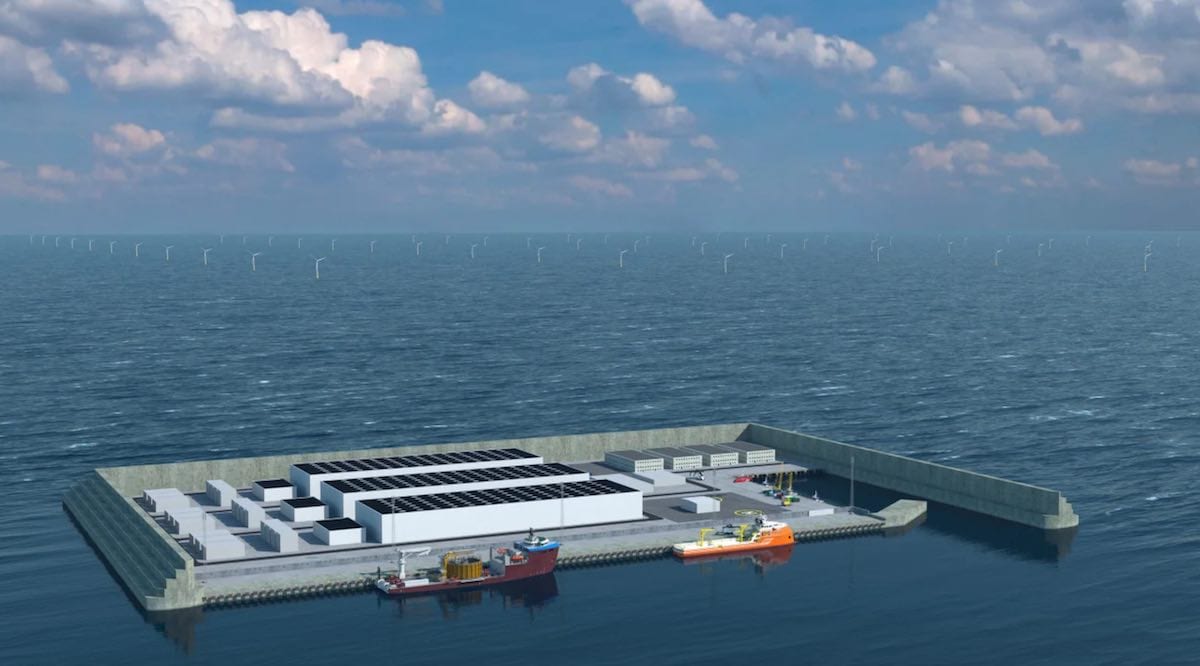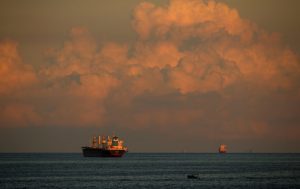Denmark has given the green light to plans to build two massive “energy islands” that will channel gigawatts-worth of offshore wind power into both renewable electricity and green hydrogen for use in shipping, aviation, industry and heavy transport.
The Danish government said on Thursday that “a broad coalition” of political parties had agreed to establish the two energy hubs and associated offshore wind farms, starting with an artificial island in the North Sea.
The North Sea island and offshore wind farms would be located roughly 80km west of the coast of Jutland, the government said, with around 200 turbines expected in the first phase of the project.
The island would initially be built to 120,000 square metres in size and 3GW of capacity, at a cost of 210 billion Danish Kroner ($A44.5 billion). This would be enough to cover the electricity needs of 3 million European households, the Danish Energy Agency said, with the aim of eventually increasing the capacity to 10GW.
Of the two energy islands, the artificial example in the North Sea is expected to offer the best opportunities for expansion, via the construction of a harbor and facilities for storage and conversion of green electricity from the nearby wind turbines in the sea.
The DEA said in a statement that the long-term ambition for the project was to be able to store green electricity on the island, convert it to liquid green fuel, and send it via subsea cables to Denmark and neighboring countries.
“The energy hub in the North Sea will be the largest construction project in Danish history,” climate minister Dan Jørgensen told a press briefing.
“It will make a big contribution to the realisation of the enormous potential for European offshore wind,” he said.
The government said the North Sea project would be a public-private partnership between the Danish state and private companies, with the State to own the majority of the island, while private companies played a “crucial” role in innovation, flexibility, cost-effectiveness and business potentials.
Denmark’s plans to build the energy islands – the second is proposed for construction on the existing island of Bornholm in the Baltic Sea – was announced in May of 2020, as part of the country’s first climate action plan.
The Scandinavian nation is working towards a legally binding target to cut greenhouse gas emissions by 70% of 1990 levels by 2030 and has committed to a cut-off date of 2050 for oil and gas extraction in the North Sea and canceled all future licensing rounds.
In stark contrast with Australia, these goals appear to be non-partisan – the social democratic government successfully secured the deal for the energy islands with eight parties in the Danish parliament, including the largest political groups.
“We are at the dawn of a new era for energy,” said Joergensen in an statement on Thursday. “Last year, Denmark set a cutoff date for fossil fuel extraction. Today we are taking a decisive step toward a clean energy future.
“By constructing the world’s first energy hub with a potential capacity of 10GW, Denmark significantly contributes to [the EU’s] ambitious [offshore wind] target. Not only by dramatically expanding renewable energy production, but also by supplying our European neighbors with an abundance of renewable energy.
“Only by inspiring others and developing new green solutions they also want to use, can we really do something to combat climate change,” Jørgensen said.









